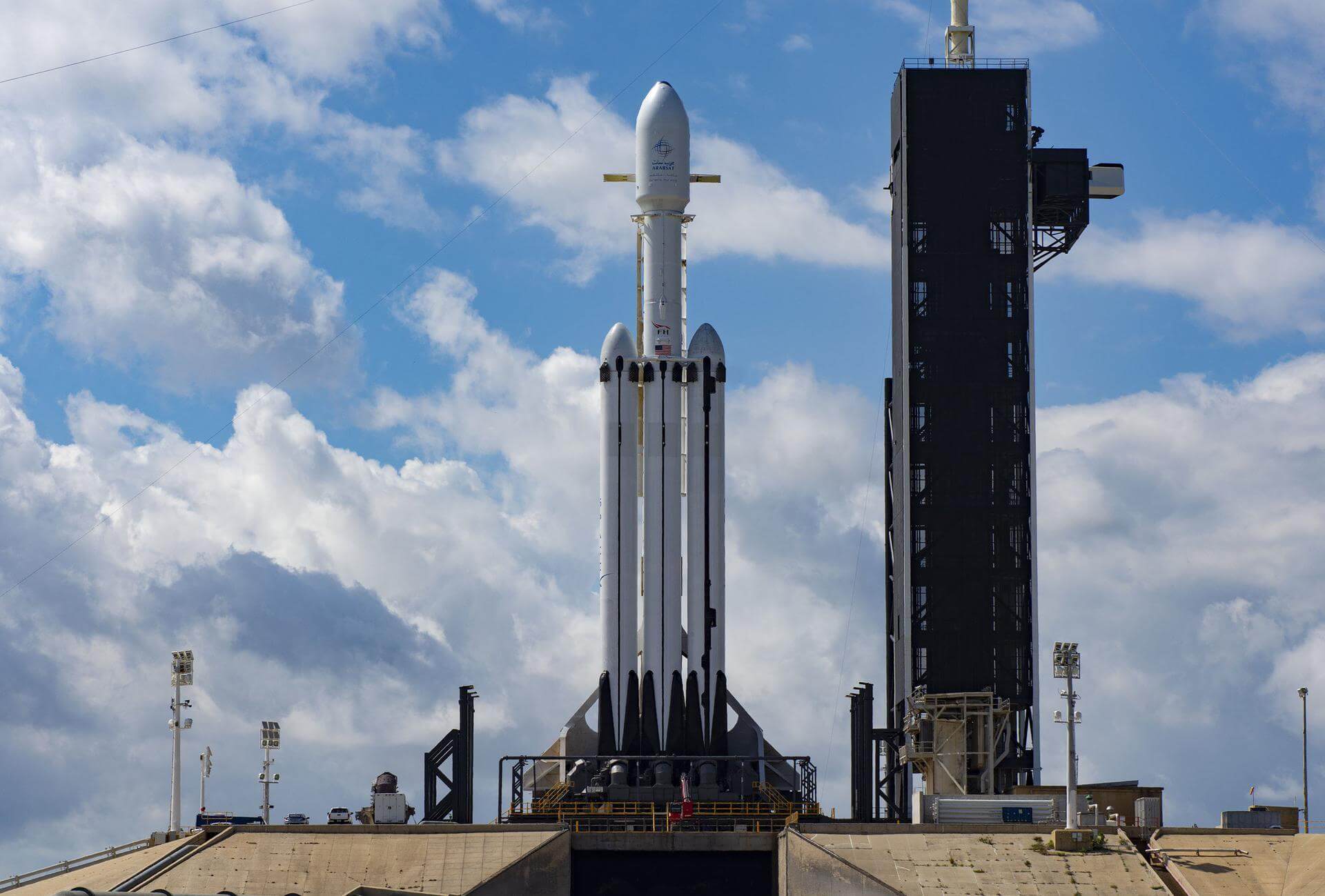Upcoming Spaceflight Launches
Filter by Agency, Locations or Vehicles
Show All LaunchesFalcon Heavy | Griffin Mission One
SpaceX | United States of AmericaKennedy Space Center, FL, USA
TBD July, 2026
Status: To Be Determined
Mission:
Demonstration flight of the Astrobotic Griffin lander and its engines, initially contracted for the cancelled NASA VIPER (Volatiles Investigating Polar Exploration Rover) mission. The vacated payload spot will now host the FLIP (FLEX Lunar Innovation Platform) lunar rover from Astrolab.
Lunar Orbit Unknown FH - Maiden Flight Unknown Unknown FH - Maiden Flight Unknown Unknown FH - Maiden Flight UnknownFalcon Heavy | Nancy Grace Roman Space Telescope
SpaceX | United States of AmericaKennedy Space Center, FL, USA
TBD October, 2026
Status: To Be Determined
Mission:
The Nancy Grace Roman Space Telescope is a NASA infrared space telescope with a 2.4 m (7.9 ft) wide field of view primary mirror and two scientific instruments. The Wide-Field Instrument (WFI) is a 300.8-megapixel multi-band visible and near-infrared camera, providing a sharpness of images comparable to that achieved by the Hubble Space Telescope over a 0.28 square degree field of view, 100 times larger than imaging cameras on the Hubble. The Coronagraphic Instrument (CGI) is a high-contrast, small field of view camera and spectrometer covering visible and near-infrared wavelengths using novel starlight-suppression technology. Roman objectives include a search for extra-solar planets using gravitational microlensing, and probing the expansion history of the Universe and the growth of cosmic structure, with the goal of measuring the effects of dark energy, the consistency of general relativity, and the curvature of spacetime.
Sun-Earth L2Falcon Heavy | USSF-70
SpaceX | United States of AmericaKennedy Space Center, FL, USA
TBD December, 2026
Falcon Heavy | Astrobotic-3
SpaceX | United States of AmericaKennedy Space Center, FL, USA
TBD December, 2026
Falcon Heavy | USSF-75
SpaceX | United States of AmericaKennedy Space Center, FL, USA
TBD December, 2026
Falcon Heavy | USSF-155
SpaceX | United States of AmericaKennedy Space Center, FL, USA
TBD June, 2027
Falcon Heavy | WGS-12 (USSF-206)
SpaceX | United States of AmericaKennedy Space Center, FL, USA
TBD June, 2027
Falcon Heavy | NROL-86
SpaceX | United States of AmericaKennedy Space Center, FL, USA
TBD June, 2027
Falcon Heavy | USSF-63
SpaceX | United States of AmericaKennedy Space Center, FL, USA
TBD June, 2027
Falcon Heavy | Gateway PPE & HALO
SpaceX | United States of AmericaKennedy Space Center, FL, USA
TBD December, 2027
Status: To Be Determined
Mission:
The Power and Propulsion Element (PPE) and Habitation and Logistics Outpost (HALO) are the foundational elements of NASA's lunar-orbiting space station "Gateway". The PPE is a 60-kilowatt class solar electric propulsion spacecraft that also will provide power, high-speed communications, attitude control and the capability to move the Gateway to different lunar orbits. The HALO is the pressurized living quarters where astronauts who visit the Gateway, often on their way to the Moon, will work. It will provide command and control and serve as the docking hub for the outpost. HALO will support science investigations, distribute power, provide communications for visiting vehicles and lunar surface expeditions, and supplement the life support systems aboard Orion, NASA’s spacecraft that will deliver Artemis astronauts to the Gateway.
Lunar OrbitAriane 62
Galileo L14 (FOC FM33 & FM34)
Ariane Launch Area 4 - Guiana Space Centre, French GuianaPayload consists of two satellites for Europe's Galileo navigation system.
Atlas V 551
Amazon Leo (LA-04)
Space Launch Complex 41 - Cape Canaveral SFS, FL, USAAmazon Leo, formerly known as Project Kuiper, is a mega constellation of satellites in Low Earth Orbit that will offer broadband internet access, thi…
Long March 4B
Ziyuan-3-04
Launch Complex 9 - Taiyuan Satellite Launch Center, People's Republic of ChinaThe ZY-3 (Ziyuan-3, 'Resource-3') series represents China's first high-resolution, stereoscopic mapping satellites for civilian use. The second sa…
Falcon 9
Starlink Group 6-82
Space Launch Complex 40 - Cape Canaveral SFS, FL, USAA batch of 29 satellites for the Starlink mega-constellation - SpaceX's project for space-based Internet communication system.
Falcon 9
Starlink Group 15-12
Space Launch Complex 4E - Vandenberg SFB, CA, USAA batch of 27 satellites for the Starlink mega-constellation - SpaceX's project for space-based Internet communication system.
Electron
Raise and Shine (RAISE-4)
Rocket Lab Launch Complex 1B - Rocket Lab Launch Complex 1, Mahia Peninsula, New ZealandRAISE-4 (RApid Innovative payload demonstration Satellite-4) is a Japan Aerospace Exploration Agency (JAXA) satellite for on-orbit demonstrations of …
Kuaizhou 11
DEAR-5
Launch Area 95A - Jiuquan Satellite Launch Center, People's Republic of ChinaDEAR-5 is a commercial in-orbit payload and micro-gravity experiments hosting spacecraft developed by Chinese commercial company AZSPACE for various …
Long March 12
SatNet LEO Group 16
Commercial LC-2 - Wenchang Space Launch Site, People's Republic of ChinaA batch of Low Earth Orbit communication satellites for the Chinese state owned SatNet constellation operated by the China Satellite Network Group. …
Falcon 9
Starlink Group 6-90
Space Launch Complex 40 - Cape Canaveral SFS, FL, USAA batch of 29 satellites for the Starlink mega-constellation - SpaceX's project for space-based Internet communication system.
Falcon 9
Starlink Group 15-11
Space Launch Complex 4E - Vandenberg SFB, CA, USAA batch of 27 satellites for the Starlink mega-constellation - SpaceX's project for space-based Internet communication system.


